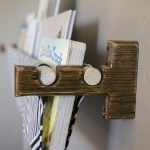Woodworking is a craft that requires precision, stability, and proper tools to achieve desired results. One essential tool that can significantly enhance the efficiency of woodworking projects is a vice. In this article, we will discuss how to set up a vice for woodworking, ensuring that you have the necessary equipment and knowledge to tackle your projects with confidence.
A vice serves as a reliable assistant in holding workpieces securely in place while you shape, cut, or assemble them. It provides stability and allows for better control over your tools, ultimately leading to more accurate and professional results. Understanding the importance of a vice in woodworking is crucial for both beginners and experienced craftsmen alike who want to improve their workflow and quality of work.
Whether you are carving intricate designs or assembling sturdy furniture pieces, selecting the right type of vice is essential. From bench vises to pipe clamps, there are various options available to suit different woodworking needs.
In the following sections, we will explore the different types of vices used in woodworking and provide guidance on choosing the right one for your specific projects. Stay tuned for valuable insights on how to make the most out of your vice in your woodworking endeavors.
Types of Vices
Woodworking vices come in various types, each with its unique features and benefits. One of the most common types is the bench vice, which is typically mounted on a workbench and offers a firm grip for holding pieces of wood securely in place. Another popular type is the face vice, which is ideal for holding larger workpieces or panels. It can be attached to the front of the workbench, providing stability and support during woodworking tasks.
An engineer’s vice is another option that is known for its durability and strength. This type of vice often comes with swivel bases, allowing for versatile positioning while working on different angles. Woodworking enthusiasts may also opt for a quick-release vice, which enables fast adjustments and secure clamping with just a push of a button. Understanding the different types of vices available can help you choose the right one based on your specific woodworking needs and preferences.
When setting up your workspace for woodworking projects, it is essential to consider the type of vice that will best suit your workflow. A well-positioned vice can enhance efficiency and precision in your woodworking tasks. Whether you prefer a traditional bench vice or a more modern quick-release model, ensuring that it is securely installed on your workbench is crucial for safe and effective use.
| Types of Vices | Description |
|---|---|
| Bench Vice | Mounted on a workbench, offers firm grip for securing wood pieces |
| Face Vice | Ideal for larger workpieces or panels, provides stability during tasks |
| Engineer’s Vice | Durable and strong with swivel bases for versatile positioning |
Choosing the Right Vice
When it comes to woodworking, having the right vice can make a world of difference in the efficiency and precision of your projects. There are several factors to consider when selecting a vice that best suits your needs and workspace. Here are some key considerations to keep in mind:
- Type of Woodworking Projects: Determine the type of woodworking projects you typically work on, as this will influence the size and type of vice you need. For example, if you work on larger pieces, a heavy-duty vice with a larger jaw capacity may be necessary.
- Mounting Options: Consider how you plan to mount the vice – whether it will be bench-mounted or attached to a set of jaws on an existing workbench. This will affect the stability and flexibility of your setup.
- Jaw Size and Capacity: The size and capacity of the jaws on the vice are crucial for holding workpieces securely in place. Make sure to choose a vice with jaws that can accommodate the sizes of wood pieces you typically work with.
Once you have determined these key factors, you can start exploring different types of vices available for woodworking. Some popular options include:
- Bench Vise: Typically mounted directly onto a workbench, bench vises are versatile tools that come in various sizes to suit different needs.
- Woodworking Vise: Specifically designed for woodworking projects, these vises often have wider jaws and more clamping power compared to general-purpose vices.
- Quick-Release Vise: Ideal for quick adjustments and efficient workflow, quick-release vises allow for easy opening and closing with just a few turns of a handle.
By considering these factors and exploring the different types of vices available, you can confidently choose the right vice for your woodworking projects. Remember that investing in a quality vice that meets your specific needs will not only improve the accuracy of your work but also enhance your overall woodworking experience.
Setting Up Your Workspace
In addition to the height of the workbench, it is essential to ensure that you have enough space around the vice to maneuver materials easily. This includes having adequate space for feeding materials into the vice, as well as enough clearance on all sides for unrestricted movement during woodworking tasks. Organization is also crucial when setting up your workspace. Having tools, supplies, and materials readily accessible will help streamline your workflow and prevent unnecessary interruptions during projects.
Another important aspect of setting up your workspace for using a vice in woodworking is lighting. Proper lighting is essential for accurately positioning materials in the vice and working on intricate details of projects.
Consider adding task lighting above your workbench or using portable lights to illuminate specific areas as needed. By paying attention to these details and creating a well-organized, ergonomic workspace, you can optimize your woodworking experience and make the most out of using a vice for various projects.
Overall, taking the time to set up your workspace thoughtfully can significantly impact the quality of your woodworking projects and make working with a vice more efficient and enjoyable. Remember to consider factors such as workbench height, space around the vice, organization, and lighting when creating an ergonomic and efficient workspace for woodworking. By doing so, you will be able to maximize the functionality of your vice and enhance your overall woodworking experience.
Installing the Vice
Installing a vice properly on your workbench is essential to ensure stability and precision in your woodworking projects. A secure vice will hold your workpieces firmly in place, allowing you to focus on crafting with accuracy and safety. Here is a step-by-step guide on how to set up a vice for woodworking:
Firstly, choose the location on your workbench where you want to install the vice. Make sure it’s positioned at a comfortable height that allows you to work without straining your back or arms. Measure the optimal distance from the edge of the workbench based on the type of woodworking projects you usually undertake.
Next, mark the holes for mounting the vice on your workbench. Use a pencil to trace around the base of the vice where it will be bolted down. Ensure that the holes are evenly spaced and align with the pre-drilled holes in your vice. Depending on the type of vice you have, there may be different mounting mechanisms, so follow the manufacturer’s instructions carefully.
Once you have marked the hole locations, drill pilot holes into your workbench using an appropriate size drill bit. This will make it easier to screw in the mounting bolts securely without splitting or damaging the wood. After drilling the pilot holes, attach the vice to your workbench using the provided bolts and washers. Tighten them securely with a wrench or socket wrench to prevent any wobbling or movement during use.
| Step | Description |
|---|---|
| 1 | Choose location and height for vice installation |
| 2 | Mark holes for mounting based on vice base outline |
| 3 | Drill pilot holes in workbench for mounting bolts |
| 4 | Attach vice using bolts and washers provided |
By following these steps, you can set up your vice securely on your workbench, providing a stable platform for all your woodworking tasks. A well-installed vice will enhance your workflow, improve accuracy, and make woodworking more enjoyable overall. Remember to periodically check and tighten any loose bolts to maintain its stability over time.
Proper Maintenance
Maintaining your vice is essential to ensure its longevity and optimal performance in woodworking projects. Regular upkeep can prevent issues such as rust, stiffness, or misalignment, which can affect the efficiency of your work. Here are some useful tips on how to keep your vice in good condition for long-term use:
Firstly, it is important to regularly clean your vice after each use. Wipe down the surfaces with a clean cloth to remove any sawdust, debris, or other particles that may have accumulated during your woodworking session. Additionally, consider applying a light coat of lubricant to the moving parts of the vice to prevent corrosion and maintain smooth operation.
Secondly, check the alignment of your vice periodically to ensure that it remains square and level. Use a square tool or measuring tape to verify that the jaws are parallel and true. If you notice any misalignment, adjust the positioning of the vice accordingly to prevent issues with clamping accuracy.
Lastly, inspect the screws, nuts, and other hardware components of your vice regularly for signs of wear or damage. Tighten any loose bolts or screws as needed to maintain stability and prevent wobbling during woodworking tasks. If you encounter any significant issues with your vice, such as damaged threads or broken parts, consider seeking professional repair services to ensure continued functionality.
By following these simple maintenance tips, you can prolong the lifespan of your vice and enjoy reliable performance during your woodworking projects. Remember that a well-maintained vice not only enhances your work efficiency but also ensures safety while working with wood materials.
Using a Vice Safely
Understanding the Risks
Before diving into the guidelines for safely using a vice in woodworking, it’s crucial to understand the potential risks involved. Vices are powerful tools that can exert a significant amount of force when clamping down on materials. Improper use or handling of a vice can result in accidents such as pinched fingers, crushed hands, or even serious injuries. It is essential to approach the usage of a vice with caution and prioritize safety at all times.
Proper Positioning and Secure Installation
One of the fundamental aspects of using a vice safely is ensuring that it is properly positioned and securely installed on your workbench. Make sure that the vice is mounted at a comfortable height that allows you to work efficiently without straining your body. Additionally, check that the vice is firmly secured to the workbench using appropriate mounting hardware. A stable and secure setup will help prevent any accidental movement or slippage during use, reducing the risk of injuries.
Handling Materials Carefully
When working with a vice, it is essential to handle materials with care to avoid accidents. Always ensure that the material you are clamping down is positioned securely within the jaws of the vice before tightening it.
Be mindful of your fingers and hands when operating the vice’s handle, keeping them clear of pinch points to prevent any potential injuries. Additionally, never exceed the recommended clamping capacity of your vice as overloading it can lead to structural damage and safety hazards.
By following these guidelines for safely using a vice in woodworking, you can minimize the risk of accidents and injuries while maximizing efficiency and productivity in your projects. Remember that safety should always be a top priority in any woodworking endeavor, and taking proper precautions when using a vice can help create a safe and enjoyable working environment.
Advanced Techniques
Utilizing Different Jaws
One advanced technique for maximizing the functionality of a vice in woodworking projects is to utilize different types of jaws. Most vices come with standard flat jaws, but you can enhance your vice by investing in specialized jaws that are designed for specific tasks.
For example, pipe jaws can be used to securely hold pipes and round stock, while soft jaws can protect delicate pieces of wood from being damaged by the vice. By having a variety of jaw options, you can increase the versatility of your vice and tackle a wider range of woodworking projects.
Adding Auxiliary Tools
Another way to enhance the functionality of your vice is by adding auxiliary tools that work in conjunction with the vice. One popular accessory is a bench dog, which can be inserted into holes on the workbench surface to provide additional support when clamping long pieces of wood.
Similarly, a bench vise jaw pad can be attached to the vice jaws to provide extra grip and prevent marring on delicate surfaces. By incorporating these auxiliary tools into your setup, you can improve both the stability and precision of your woodworking projects.
Exploring Advanced Clamping Techniques
To truly maximize the functionality of your vice in woodworking projects, it’s important to explore advanced clamping techniques that go beyond simple tightening and releasing. One technique is utilizing angled or offset clamping positions to secure odd-shaped workpieces or create diagonal cuts.
Additionally, experimenting with pressure distribution by using spacer blocks or shims can help evenly distribute clamping force across large or irregularly shaped objects. By mastering these advanced clamping techniques, you can achieve tighter holds and greater control over your woodworking materials.
Conclusion
In conclusion, setting up a vice for woodworking is crucial for any woodworking enthusiast looking to improve their projects’ precision and efficiency. By understanding the importance of a vice in woodworking and choosing the right type based on your specific needs, you can enhance your workmanship and achieve better results. Selecting a vice that suits your project requirements and workspace constraints, such as bench space and material holding capacity, will significantly impact your overall woodworking experience.
Furthermore, creating an ergonomic workspace and securely installing the vice on your workbench are essential steps in ensuring optimal performance and safety while working on your projects. Proper maintenance of the vice is also key to prolonging its lifespan and functionality, making it important to regularly clean and lubricate the moving parts. By following these guidelines, you can enhance the longevity of your vice and achieve consistent results in all your woodworking endeavors.
Ultimately, using a vice safely and exploring advanced techniques can further elevate your woodworking skills and project outcomes. Adhering to safety guidelines when operating a vice not only protects you from potential accidents but also ensures that your projects are executed with precision and accuracy. By incorporating advanced techniques into your workflow, such as utilizing additional accessories or fixtures for more complex projects, you can maximize the functionality of your vice and take your woodworking capabilities to new heights.
Frequently Asked Questions
How Do You Install a Wood Working Vice?
Installing a woodworking vice involves determining the location on the workbench where it will be mounted securely. Typically, this involves drilling holes for bolts to attach the vice to the bench. Ensuring that the vice is level and stable is crucial for effective operation.
How Should a Woodwork Vice Be Used?
A woodworking vice should be used by placing the piece of wood to be worked on between the jaws of the vice and then tightening the handle to secure it in place. It’s important to adjust the pressure according to the task at hand and always ensure that the wood is held firmly in place before working on it.
How Do You Position a Vice on a Workbench?
Positioning a vice on a workbench starts with finding a suitable location that allows for comfortable use and good access to your workpiece. Typically, a woodworking vice is positioned towards one edge of the bench to provide ample space for maneuvering tools and materials.
It’s essential to ensure that the vice is securely attached to prevent wobbling or movement during use.

Hi everyone! I’m a woodworker and blogger, and this is my woodworking blog. In my blog, I share tips and tricks for woodworkers of all skill levels, as well as project ideas that you can try yourself.





